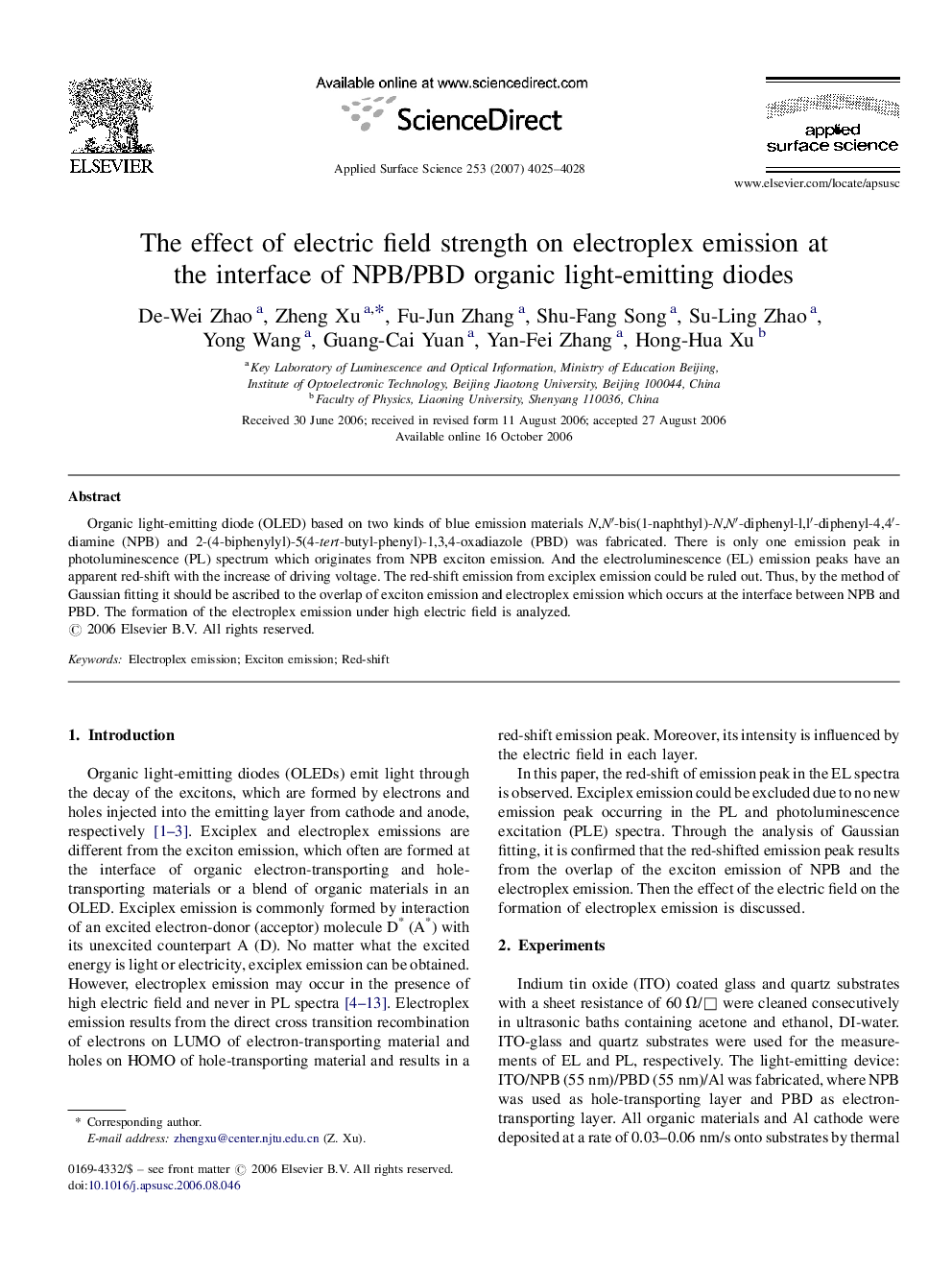| Article ID | Journal | Published Year | Pages | File Type |
|---|---|---|---|---|
| 5369880 | Applied Surface Science | 2007 | 4 Pages |
Organic light-emitting diode (OLED) based on two kinds of blue emission materials N,Nâ²-bis(1-naphthyl)-N,Nâ²-diphenyl-l,lâ²-diphenyl-4,4â²-diamine (NPB) and 2-(4-biphenylyl)-5(4-tert-butyl-phenyl)-1,3,4-oxadiazole (PBD) was fabricated. There is only one emission peak in photoluminescence (PL) spectrum which originates from NPB exciton emission. And the electroluminescence (EL) emission peaks have an apparent red-shift with the increase of driving voltage. The red-shift emission from exciplex emission could be ruled out. Thus, by the method of Gaussian fitting it should be ascribed to the overlap of exciton emission and electroplex emission which occurs at the interface between NPB and PBD. The formation of the electroplex emission under high electric field is analyzed.
